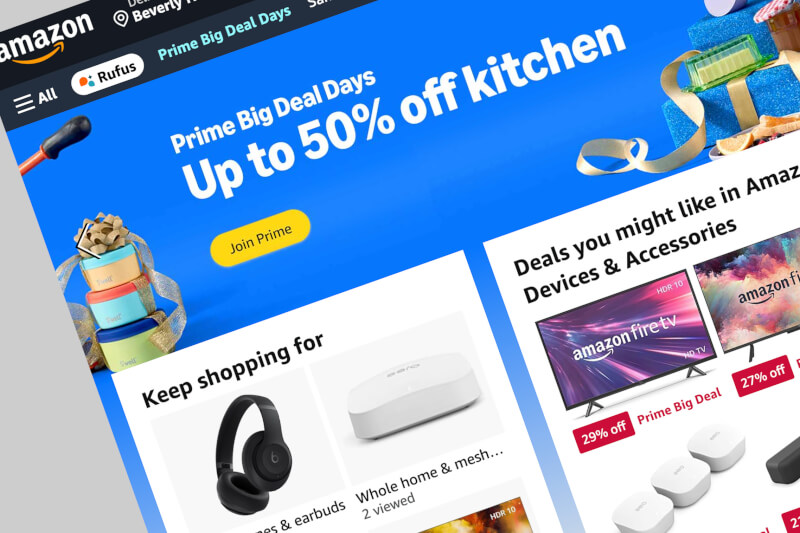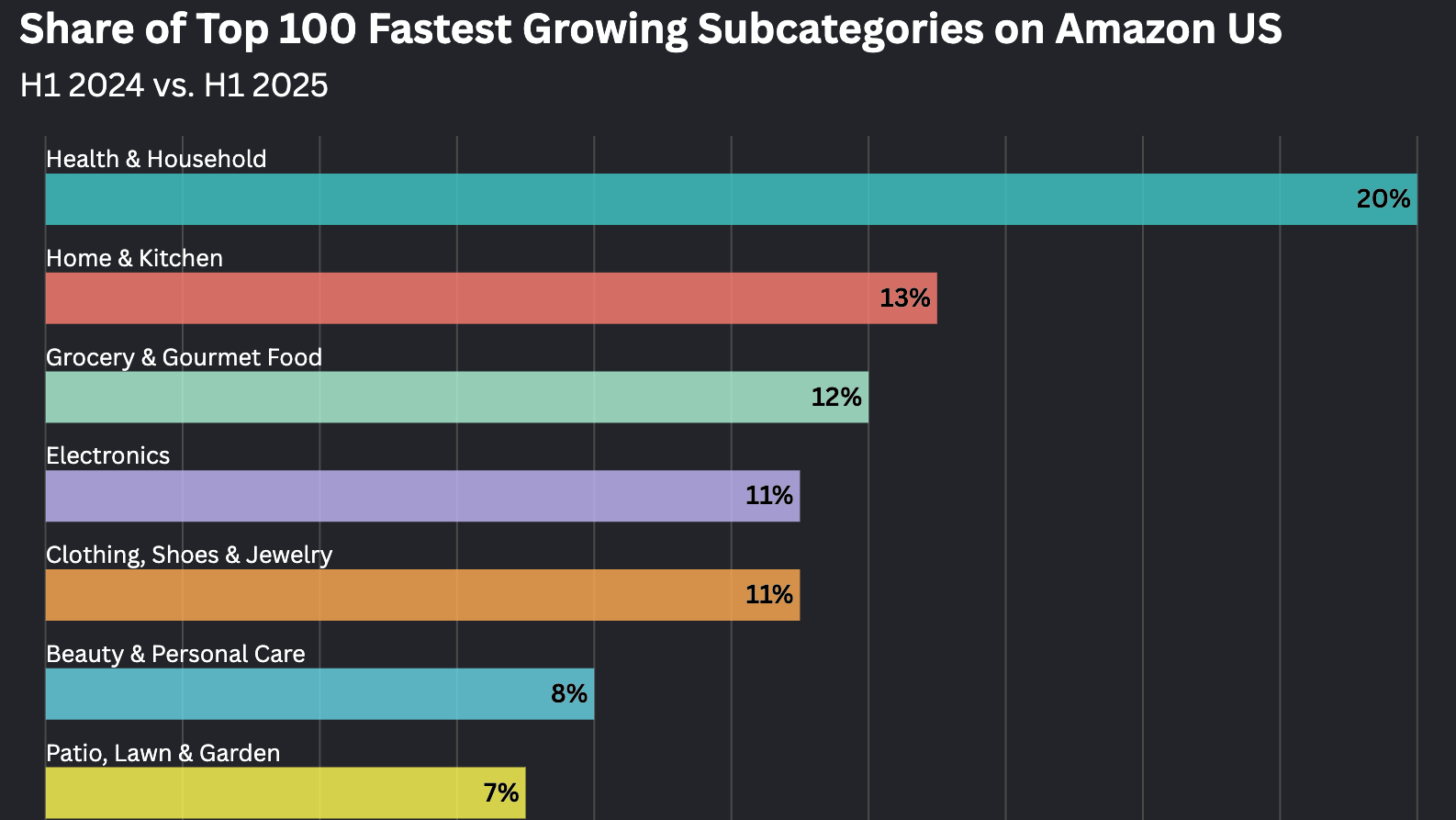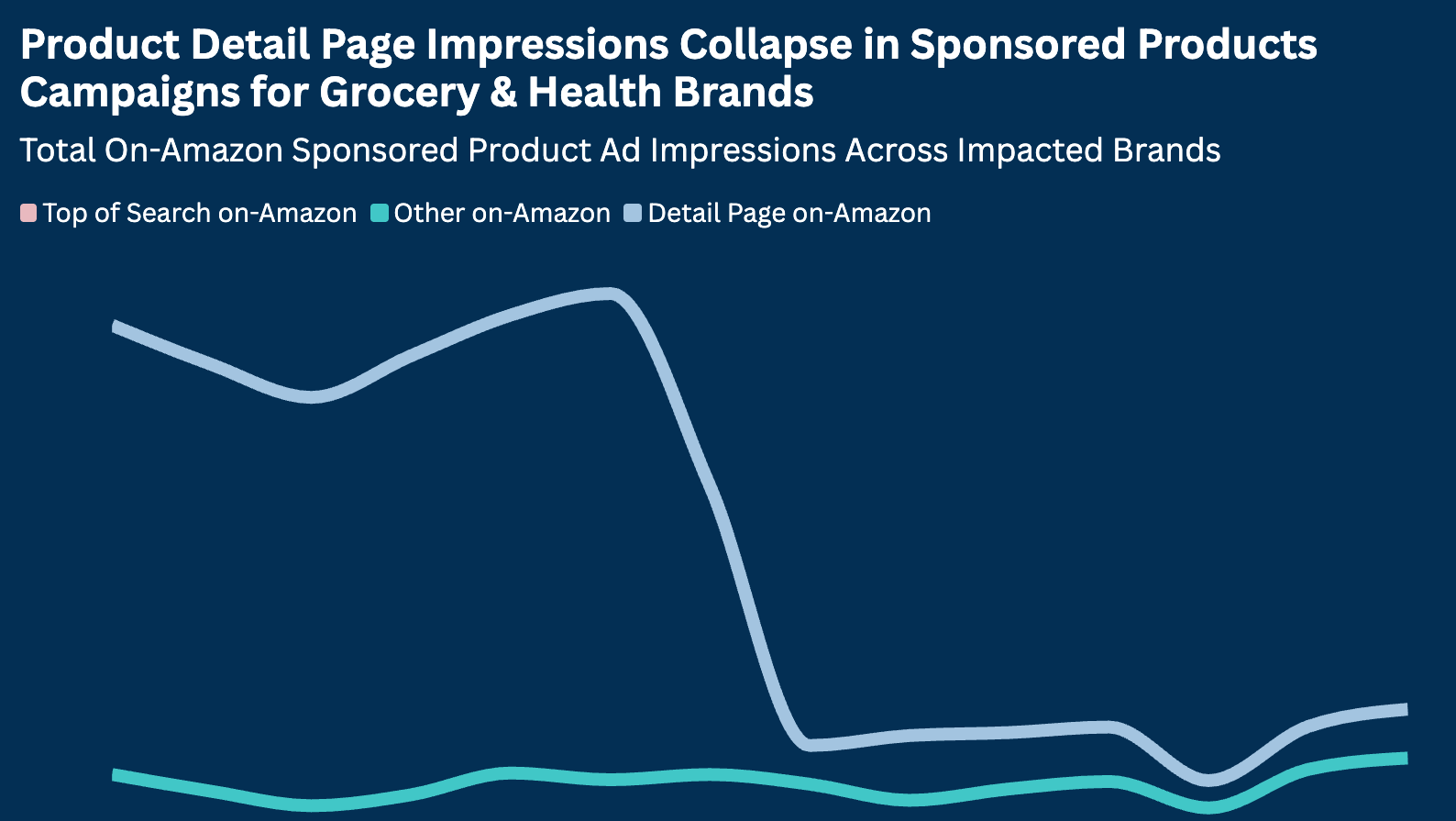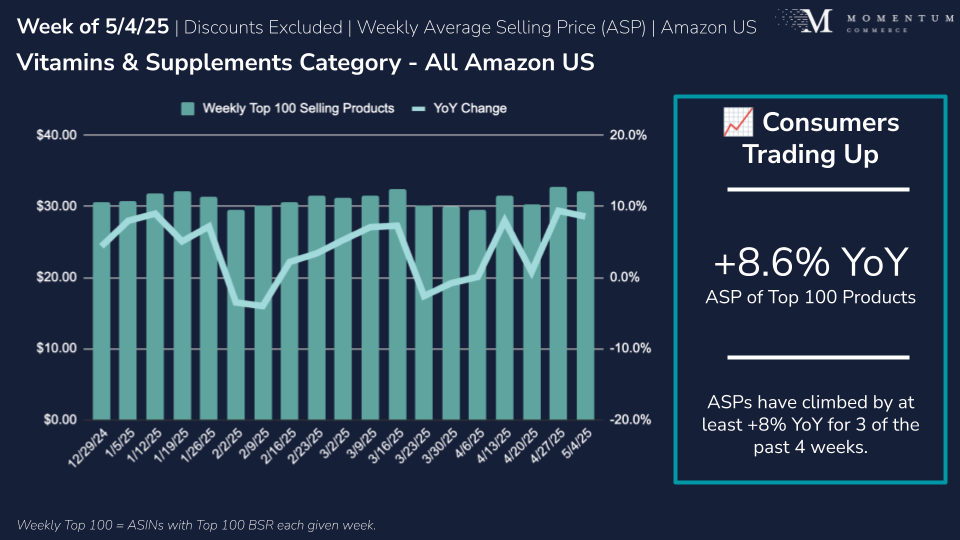
Tariff Impact Analysis: Health & Household on Amazon US
Different corners of the Health & Household category on Amazon US are experiencing wildly diverging pricing and market dynamics. While buyers opt for higher-priced options in some subcategories, they’re trading down to lower-cost alternatives in others. Additionally, historic top products in certain categories are decreasing their prices marginally, while others are raising prices, potentially in response to tariffs. This is similar to what we observed in the Home & Kitchen category.
As mentioned in that previous piece, the recent 90-day pause for the bulk of tariffs on Chinese goods makes any spikes in ASPs for historic top products less likely over the short term. However, given supply chain and inventory lead times, shallower increases are likely. The coming weeks merit close observation of trading down activity, as it may signal shifts in broader consumer sentiment.
Consumers OK Paying More for Supplements
According to Momentum Commerce’s analysis, the weekly top 100 Amazon US products in Vitamins & Supplements saw their average selling price (ASP) rise +8.6% year-over-year (YoY) for the week beginning May 4, 2025. This makes three out of the past four weeks where YoY increases hit +8% or more, the strongest stretch of 2025 to date.

The story is very different in Wellness & Relaxation, where ASPs declined -27.0% YoY. While consumers in Vitamins & Supplements accept higher prices, those shopping in Wellness & Relaxation are actively seeking less expensive alternatives. This does suggest that consumers are willing to spend a bit more on their health even in the face of rising prices and broader economic uncertainty.
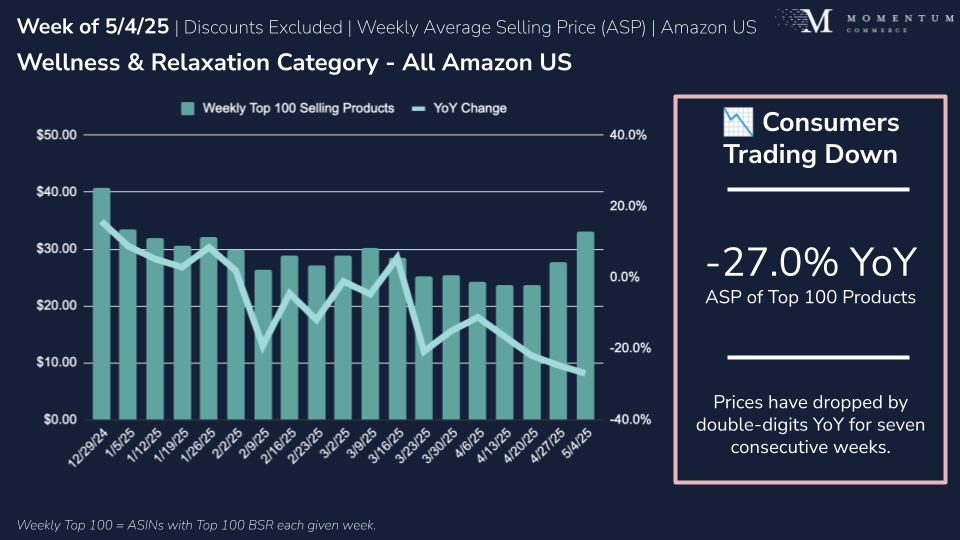
Brands Seemingly Responding to Consumer Behavior Shifts
With Wellness & Relaxation’s weekly top product pricing dropping precipitously due to changing consumer buying habits, there’s some evidence that top brands are cutting prices to be more competitive. Across a consistent basket of products that achieved a top-100 BSR at any point in 2024, ASPs dipped -2.6% YoY for the week beginning May 4, 2025 in Wellness & Relaxation. This makes four out of the past five weeks where ASPs declined YoY, something that didn’t happen once from January through Mid-March.
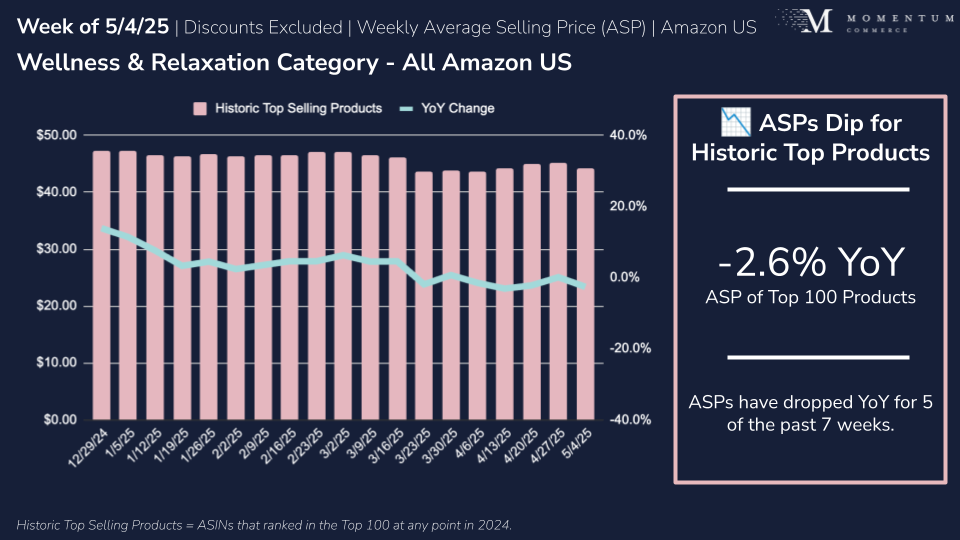
Alternatively, prices of historic top sellers have begun to tick up in Vitamins & Supplements. With the delta in price between these products and current top sellers remaining largely unchanged, historic top-selling products have remained price competitive.
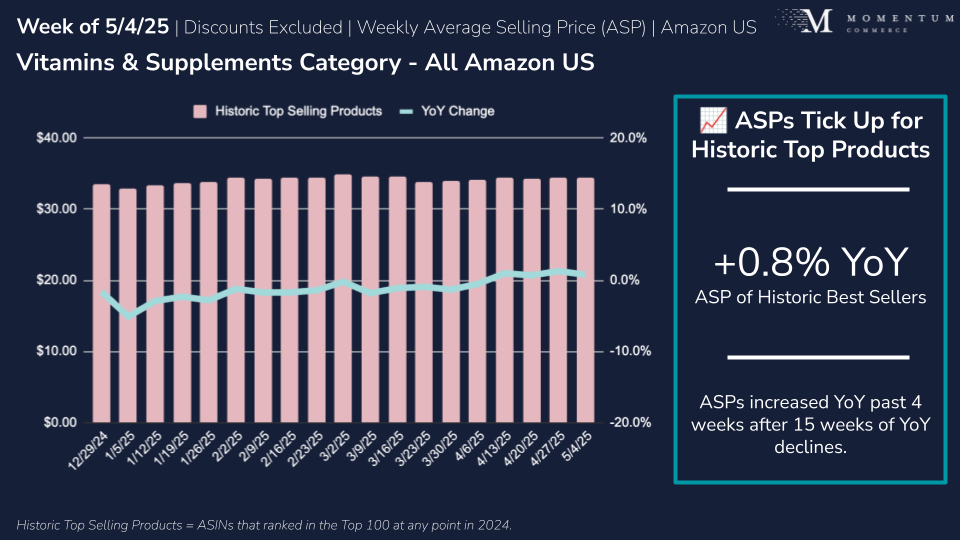
Key Lessons for Brands
Don’t Assume, Know What’s Happening in Your Category Specifically
- While Amazon-wide trends can be a helpful gut-check, any strategic shifts need to reflect the on-the-ground realities within your category
- Particularly with Prime Day on the horizon, brands should calibrate pricing strategies based on category-specific demand elasticity, not broader Health & Household averages
- At a base level, consider tactics like tracking the ASP of top BSR products over time, along with paying close attention to changes in conversion rates across your premium, mid-tier, and entry-level products
Be Prepared to Adjust as Consumer Sentiment Shifts
- With at least a modicum of stability temporarily around tariffs, its worth reassessing demand planning and promotions given the state-of-play of consumer behavior in your category
- If there are pockets of your catalog that have more inventory and/or margin flexibility, it’s worth examining where promotions are likely to drive the most uplift so deploying any discounts or additional advertising is as precise as possible


